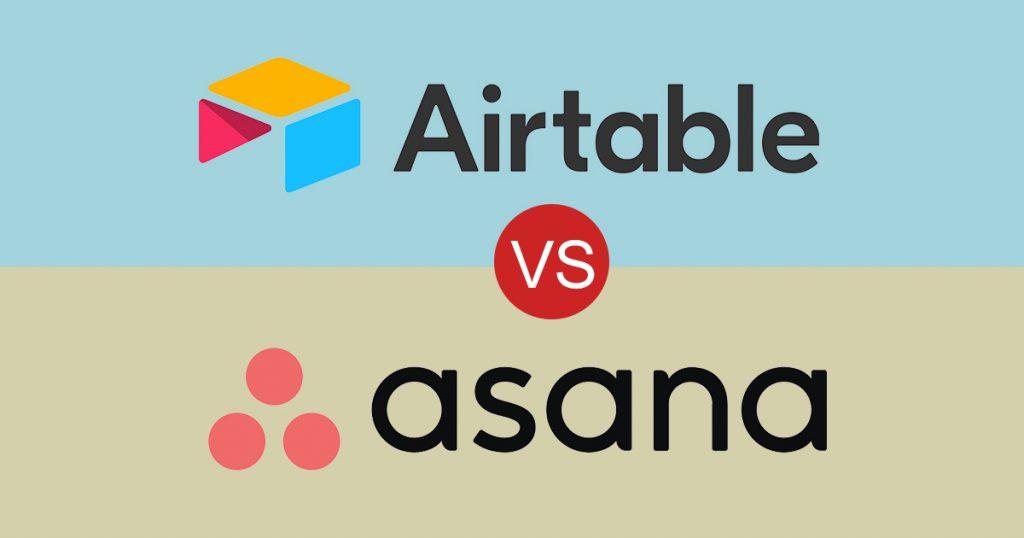Selecting the appropriate tool for project management can significantly enhance your team’s organization, efficiency, and focus. Airtable and Asana are two of the top tools for project management today. They both offer unique features that cater to different types of users and project needs.
Overview of Airtable and Asana
Airtable is a unique blend of a spreadsheet and a database, designed to help teams organize information flexibly. It’s popular among teams that manage data-heavy projects or require customizable workflows.
Key Features of Airtable:
- Design feels like a familiar spreadsheet but with added power for organizing data.
- With Airtable for task management, you can create custom fields, link records, and organize tasks in a way that best fits your team.
- Users can switch between grid, calendar, Kanban, gallery, and Gantt views to visualize projects from different perspectives.
- Connects to many other tools like Slack, Google Calendar, and yes—Asana Airtable integration is possible, allowing teams to use both tools together if needed.
On the other hand, Asana is a project and task management tool that keeps teams organized by breaking down projects into manageable steps.
Key Features of Asana:
- Ideal for organizing complex projects. With the Asana storage limit set to 100MB per file and unlimited storage overall, teams can easily attach files to tasks.
- The goal-tracking feature help users keep track of big-picture objectives.
- Many integrations (including with Airtable) support team collaboration, making it a versatile project management solution.
Differences Between Airtable & Asana
Here are the primary differences between Airtable and Asana that distinguish their strengths and ideal use cases:
1. Data Organization and Management
Airtable is ideal for teams needing flexible data organization. It combines spreadsheet and database features, allowing users to create custom fields and organize information in ways that fit their needs. With views like grid, calendar, kanban, and gallery, Airtable for task management goes beyond simple task tracking, making it easy to handle both tasks and other project-related data.
Asana is focused on managing tasks and projects, offering list and board views to organize work. It has fewer customization options than Airtable but shines in simplicity. In Asana, users can easily create tasks and subtasks to break down projects, but it lacks Airtable’s advanced data organization. This makes Asana a solid choice for straightforward task tracking without complex customization.
2. Task Management and Subtasks
Asana is excellent for task management with its user-friendly layout. Teams can create tasks, assign them, set deadlines, and track progress in various views (list, board, calendar). The Asana storage limit for attachments is 100 MB per file, which is adequate for most task-related documents and files. It also allows for easy breakdowns with subtasks, helping teams manage larger projects step-by-step.
Airtable also supports task management as part of a larger data organization system. You can assign tasks and set deadlines, though setting up Airtable subtasks requires more manual configuration than Asana. This extra setup may suit teams who want to customize task flows within Airtable’s broader data management structure.
3. Collaboration Features
Both tools offer strong collaboration features. In Airtable, team members can update information in real time, leave comments, and connect with other tools, making it easy to collaborate. Airtable’s flexibility in handling various data types means teams can customize how they collaborate and communicate on different projects.
Asana is also built for collaboration. It offers task assignments, comments, and notifications, making it clear who’s handling what within a project. With Asana Airtable integration, teams can combine Airtable’s data capabilities with Asana’s task management features, allowing them to bring the best of both tools together.
4. Integrations and Flexibility
Airtable offers over 1,000 integrations through its API, giving teams flexibility in linking it with other tools. Its Airtable for task management features can be enhanced by connecting with tools like Slack, Google Workspace, and project management apps.
Asana comes with many pre-built integrations with popular tools like Slack, Google Drive, and Microsoft Teams. Though Asana may not offer as deep customization as Airtable, its integrations are easy to set up. This is especially appealing for teams looking for a quick start without the need for extensive API customization.
5. Learning Curve
Airtable may take a bit longer to learn, especially if you’re new to databases. Users familiar with spreadsheets will adjust more quickly, but it still has advanced features that might take time to master.
Asana is easier for most people to pick up since it’s focused on task management. New users can usually start managing tasks right away without much training.
6. Basic Pricing
Airtable offers a 14-day free trial and its paid plans start at $10.00 per seat per month. It also provides a free plan. On the other hand, Asana has a 30-day free trial, with paid plans starting at $10.99 per user per month. Like Airtable, Asana also offers a free plan.
Use Cases
When to Choose Airtable:
- If you need flexible options for managing different types of data, not just tasks.
- If your projects involve a mix of data and require more than simple task tracking.
- When your team wants advanced reporting with customizable dashboards.
When to Choose Asana:
- If you need a tool mainly for task and project management.
- When you want an easy, intuitive tool that’s quick to learn and set up.
- If your team needs strong collaboration features for tracking projects.
Deciding Between Airtable and Asana for Effective Project Management
Choosing between Airtable and Asana depends on what your team needs. If you need a flexible tool to manage different types of data along with tasks, Airtable is a great choice. On the other hand, if your main focus is task management with an easy-to-use interface, Asana is the better option. Both tools can be integrated together, combining their strengths to help your team work more efficiently.
